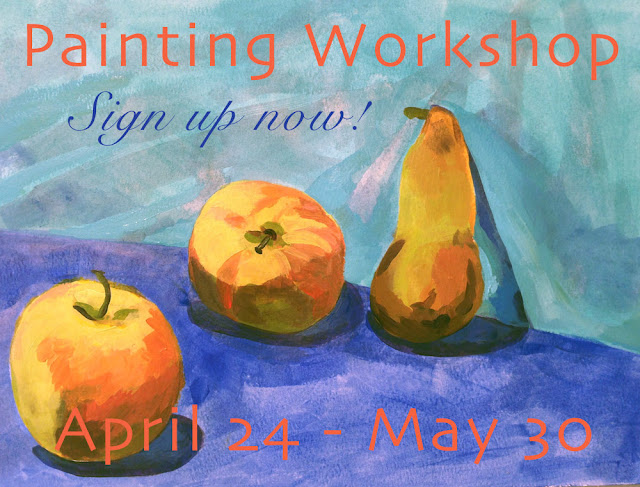Last Monday I visited Dave Hedderman, the current Portrait Drawing Intensive instructor with Berlin Drawing Room, in his studio and I rediscovered the breathtaking power of figurative works done right. I also had the rare chance of getting to know a very accomplished, yet modest, painter.
 |
| Dave teaching the Portrait Drawing Intensive in his studio |
As I walked into the typical “kreuzberger Hinterhof” and went upstairs to the tucked away ¾ Studio I had mixed feelings about the building, which in spite of preserving its sloppy altbau charm, has discernibly been caught in the wave of massively accelerated gentrification of the neighborhood.
My concerns of finding yet another hipster co-working space were quickly wiped away as I walked in on Dave painting a big canvas entitled “X” and took a first glimpse at the studio. What a refreshing feeling it was to discover an actual place of work where objects exist to be put to use, as opposed to sitting around for decorative purposes.
Dave’s studio is light and spacious. New oil paintings in progress, old works pending revisitation, archive material and drawings from his life drawing sessions hang on the walls, framed by large music speakers, amplifiers and an electric guitar. The first thing that slips out of my mouth, as I discover the camping cooking plates and the folded mattress: “I could so easily live here!” – to which Dave responds with a chuckle.
 |
| 'untitled'-2016 112x112cm. oil/charcoal/linen |
What was meant to be a short interview turns into a long, pleasant talk sitting by the window, sipping coffee and smoking cigarettes whilst debating life in Berlin, the struggles of being an artist and life altogether.
I keep observing everything around me, mesmerized by the quality of Dave’s work – to which his online portfolio does absolutely no justice. The comforting vibe of the space, like its owner, has no presumptuous sides to it.
Dave tells me about his notes to self and the diaries of his work process as he points at some notebooks on the floor. We talk about his beginnings and academic training, his experiences as a teacher and his initiations at writing.
When I ask him about possible inclinations on inspirational sceneries he paints a vivid mental picture of a Dublin concrete pier in the late evening, but also mentions some distinct situations he’s observed in the Britzer Garten in the summertime (an old lady getting her wheelchair stuck in the loam in an attempt of properly smelling a flower). He proceeds to show me some pictures of random daily encounters he’s taken with his smart-phone and printed out on paper, one of them being the source of inspiration for his current work in progress. Dave explains, “this is technology serving me. I couldn’t capture the nature of such fugacious moments anyhow else”.
“So why portraits?” I ask him.
Dave: “I think there are so many themes in us people that one could explore that throughout a lifetime and still not get enough. Also, observing others with the purpose of drawing them is a much different experience of looking from the one we get out of common social interactions: I often find myself somewhat transported by that, in some kind of a meditative state whilst drawing even, which becomes a great way of looking at myself too. So I guess that’s it; people I can simply express myself through.”
 |
| Portrait Drawing Intensive at Dave's studio |
 |
| Portrait Drawing Intensive, students at work. |
Interview and article by Cora Marin, Berlin Drawing Room Intern
Dave Hedderman is a figurative artist and arts educator, with a focus on the human form. He received his B.A. Degree in Fine Art from the NCAD, Dublin, Ireland in 2005. He was the 2015 recipient of the Hennessy Craig Scholarship, awarded for his contribution to the 185th RHA Annual Exhibition. His work has been featured in numerous group and solo presentations in both Ireland and Germany.
He teaches the Portrait Drawing Intensive as part of the Berlin Drawing Room team, as well as weekly life drawing classes.
Davehedderman.com







































